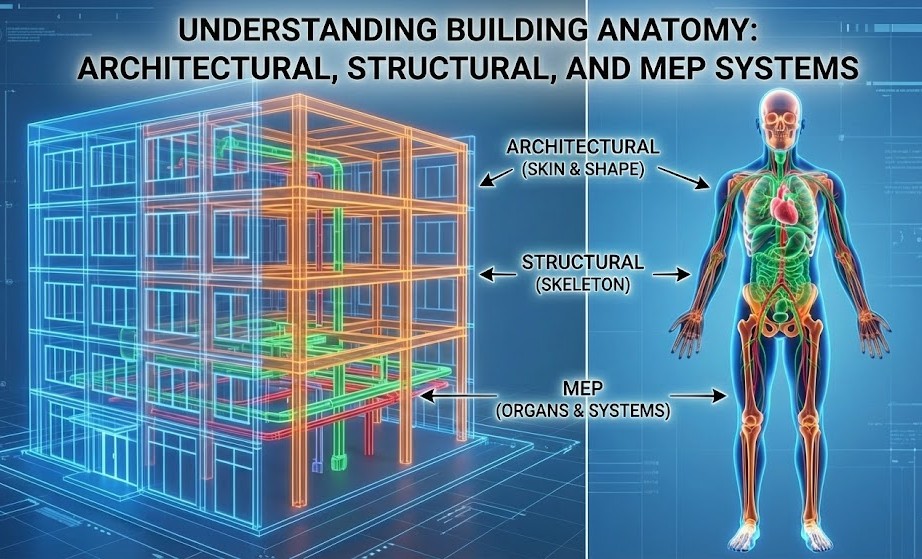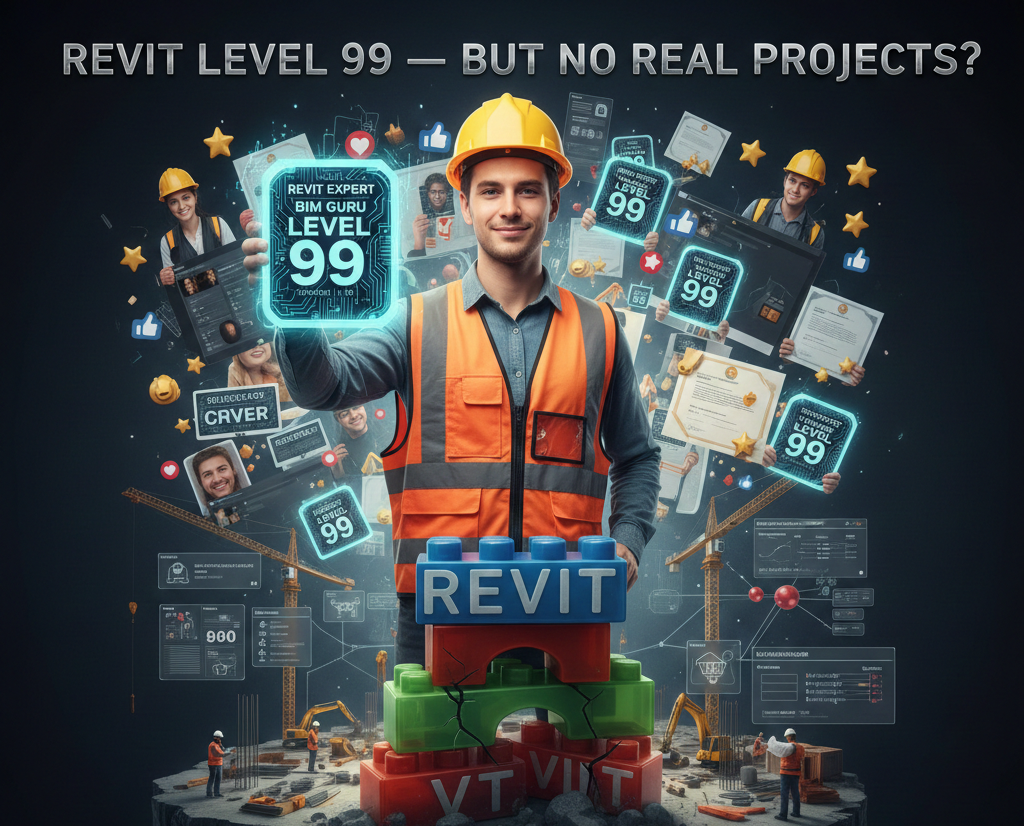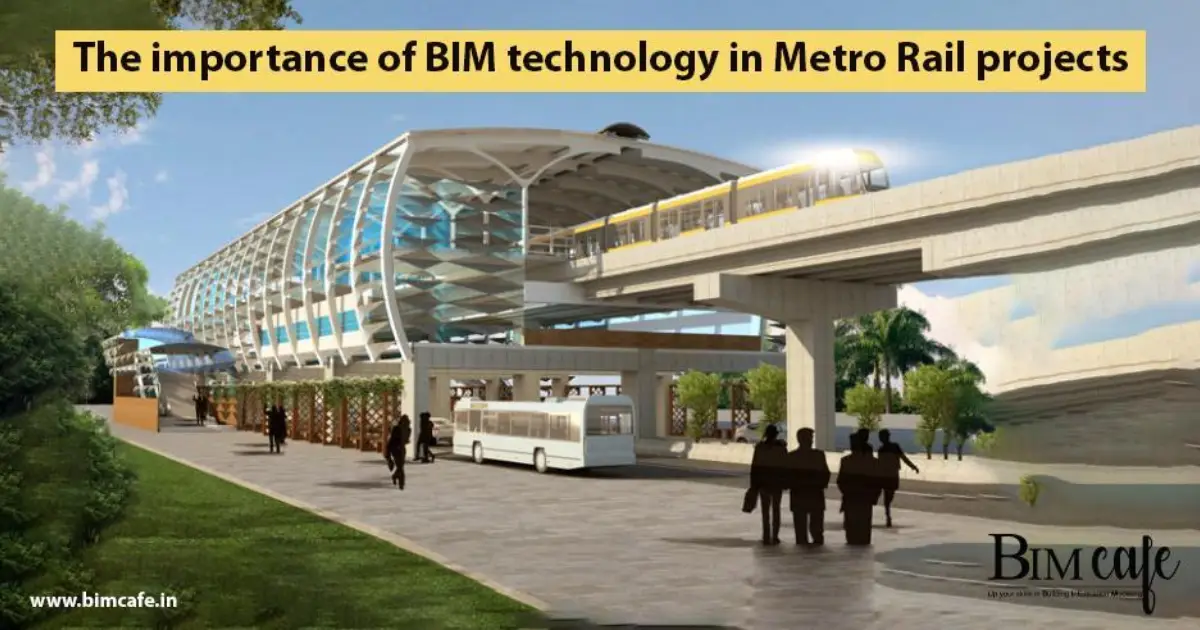
Author: Devika R
March 20, 2024
3 min read
Are you stuck in traffic again? Imagine a world where commutes are faster and smoother for everyone. This future is closer than you think, especially with the rapid expansion of metro rail systems in our growing cities. But building these underground marvels comes with a unique set of challenges. Did you know a single metro project involves coordinating hundreds of engineers, designers, and construction workers, all working in tight spaces and against the clock?
This is where BIM (Building Information Modeling) steps in as a game-changer.
BIM technology, with its ability to create detailed 3D models, virtual simulations, and lots of other cool features, can help solve these technical issues. It allows for a deep dive into the entire life cycle of a metro rail project, making planning and execution much smoother.
With software like Revit and tools like Navisworks, project planners can use BIM to come up with the best construction plan, imagining how everything will come together. Advances in BIM technology, like using cameras and sensors, help integrate, monitor, and maintain underground systems in real time.
In short, BIM does not just make the engineering and building of metro rail systems more efficient; it also helps keep them running smoothly with less need for repairs. This means projects can be completed better and faster, making life easier for everyone in the city.
Why should BIM be used in Metro Rail Projects?
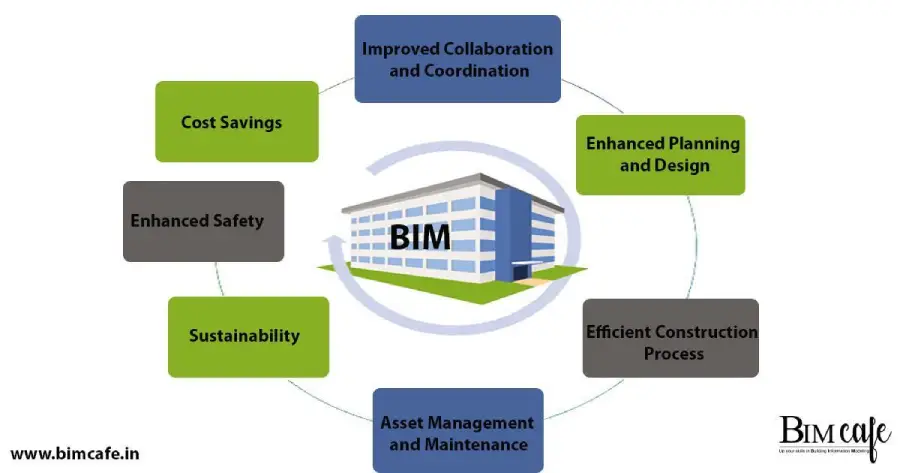
Implementing Building Information Modeling (BIM) in a Metro Rail Project offers numerous benefits that streamline the entire lifecycle of the project, from planning and design to construction and maintenance.
- Enhanced Planning and Design
- Improved Collaboration and Coordination
- Efficient Construction Process
- Cost Savings
- Enhanced Safety
- Asset Management and Maintenance
- Sustainability
The Metro Rail Project faces what challenges without BIM?
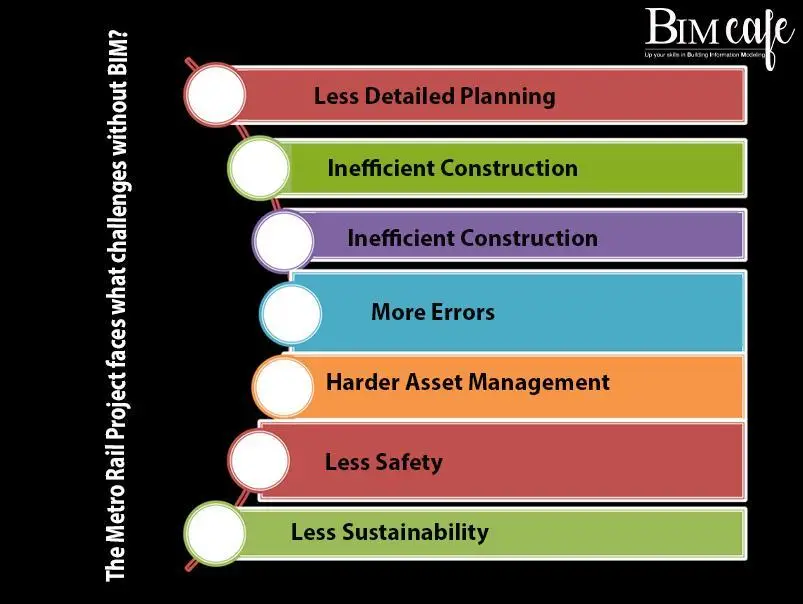
Without BIM, Metro Rail Projects may face these challenges:
Less Detailed Planning: It’s harder to plan the metro system without detailed 3D visuals, leading to more mistakes and wasted time.
Poor Communication: Without a shared platform, it’s tough for everyone involved to work together smoothly.
Inefficient Construction: Without virtual planning, construction might not be as organized, leading to delays and higher costs.
More Errors: Without BIM’s error-checking, mistakes in design may not be caught early, resulting in costly fixes later.
Harder Asset Management: Keeping track of metro assets without a digital model can be messy and prone to errors.
Less Safety: Without simulations, safety risks might not be spotted until it’s too late.
Less Sustainability: BIM helps plan eco-friendly features, so without it, the metro might not be as green.
Forget gridlock, embrace the BIM Express! This revolutionary technology is not just building smoother metro rides, it’s building smarter cities. With BIM, we are fast-tracking efficient, safe, and sustainable transportation for everyone. Are you ready to board the BIM train?

